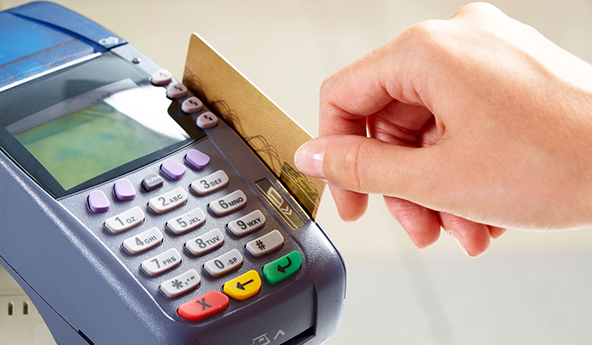5 Tips for Authorizing Card-Present Transactions

Authorization is the process through which issuers approve or decline a card transaction. It is as an indication that funds are available in the account and the card has not been reported as lost or stolen. Typically, an authorization request is processed electronically and the merchant receives the issuer’s decision in seconds. The request can also be made over the phone, if the issuer’s authorization system is down for some reason, but this should be avoided, because such requests are expensive and a voice approval cannot be used in a chargeback re-presentment, if it comes to that.
Authorizations are required for all card-not-present transactions, regardless of the amount. An e-commerce or MO / TO transaction that has been processed without an authorization approval is subject to an automatic chargeback, with no recourse for the merchant. However, the rules for card-present authorizations are different and I have five tips for you on how to manage them.
5 Tips for Authorizing Card-Present Transactions
1. Authorize all transactions that are above your floor limit. Your floor limit is set by your payment processor and states the amount above which all of your credit card transactions must be authorized before being processed. There are no exceptions. Listed in the table below are the possible responses to your authorizations requests and their meanings:
|
Response |
Meaning |
|
Approved |
The card issuer approves the transaction and you can proceed with it. |
|
Declined or Card not Accepted |
The issuer does not approve the transaction and it should not be completed. Return the card and request an alternative payment method. |
|
Call, Call Center or Referrals |
The issuer needs more information about the transaction. Call your authorization center and follow the operator’s instructions. They may want to speak directly with the cardholder. |
|
Pick Up |
The issuer wants to recover the card. Do not complete the transaction, but inform your customer that you have been instructed to pick up the card and ask for an alternative payment form. If you feel uncomfortable or threatened, simply return the card to the cardholder. |
2. For transactions that are below your floor limit, you can either:
- Not request an authorization, but compare the card number to the Card Recovery Bulletin (CRB), which would be done electronically or
- Request an authorization anyway.
3. If the card is listed in the CRB, you are required to:
- Not complete the transaction.
- Pick up the card, but only if it is safe to do so.
- Call your processor’s voice authorization center, state that the card number is listed in the CRB and ask for instructions.
4. Regardless of the amount, authorization approvals are required for:
- Expired cards.
- Manual cash.
- Unattended terminal transactions.
If you receive an approval, complete the transaction. Otherwise, request an alternative payment form.
5. Learn how to process partial authorizations and split-tender transactions.
- Partial authorizations enable issuers to approve amounts that are lower than the transaction amount when the available card balance is not sufficient to cover the full transaction amount, providing an alternative to a declined transaction. The benefit for the cardholder is that she is able to use up the remaining available balance on her card and then use another payment form, such as cash, check or another bank card for the remaining balance. All major credit card associations and companies support partial authorizations. Contact your point-of-sale (POS) vendor for information on how to do it.
- A split-tender transaction is the consequence of a partial authorization approval, occurring when a part of the sale’s amount is paid with a card and the other part – with some other form of payment (or tender). Typically, split-tender transactions are used to allow users of prepaid cards to spend the remaining balance of their card, even when it is lower than the full transaction amount. It is each merchant’s individual decision whether or not to accept split-tender transactions.
The above tips apply to magnetic-stripe card transactions. The rules for EMV (chip-and-PIN) authorizations are different, but U.S. merchants are not yet equipped to accept chip cards, so I have left them out.
The Takeaway
Authorizing card-present transactions is a fairly straightforward process. If your request is approved, your POS terminal will automatically print out a sales receipt for your customer to sign and complete the transaction. If a negative message or an alert is received, the terminal will display the response, no sales receipt will be printed and you will be prompted to take the appropriate action. Whatever the authorization response, however, you should treat your customer with courtesy and respect throughout the transaction.
Image credit: Prweb.com.



There should also be some input through your website on controlling the Direct Debit Frauds(Frauds perpetrated on Blocked Cards) .